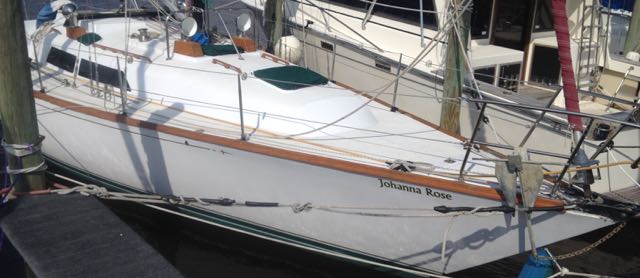Cross-Wire Idlers
While working on the steering system, some rusting was noticed on the steering idler backing plate. It looked mostly like surface rust, and so it was cleaned with a wire wheel, painted with some rust neutralizer spray, and then painted with white Rustolium spray paint.
 |
| old wire idler |
 |
| painted old wire idler |
Soon after, a message from one of the CnC listers described his challenges and mechanical problems he encountered during the "Isla Mujeras Regata al Sol", a biannual race from Pensacola sailing 545nm to Isla Mujeras in Mexico. In short, he had steering issue due to the idler backing plate corroding and giving away allowing the steering cables to go slack.
He added this statement in his message:
"I hope to share this experience with everyone in that it's not enough to inspect your steering cables and sheves - mine looked fine prior to race. Advise removing binnacle to get a very clear view of backing plate and how well sheves are attached. If your going off shore this is a must. No matter how much you prepare - AIS, radar, all safety gear, rig inspection etc etc. there is always more to consider prior to going off shore."
The Regata Al Sol is on my bucket list (and possible within the next few years too as Pensacola is in the neighborhood). So at this point I had to drop the wire idlers, and holly crap look at what I found, my own disaster waiting. At the same time, I pulled the steering pedestal (recovered one of those brake pad washers I had dropped), checked all the pedestal steering components, over drilled, epoxy filled, and re-drilled holes for the steering system and pedestal mount.
Thanks to Steve for the motivation.
 |
| corroded wire idler support plate |
New Cross-Wire Idlers
New cross wire idlers were purchased from Sailnet at a good price, and they were shipped directly from Edson Marine. The new idler feature an anodized aluminum base rather than a steel base of the old design. In order to fit the LF38 fuel tank which sit right under the steering system, the wire idlers were modified by removing the small downward extending tabs (compare pictures below).
 |
| Edson 776Al-4AL |
 |
| new wire idler purchased from Sailnet |
 |
| new wire idler installed and adjusted with fuel tank in place |

















